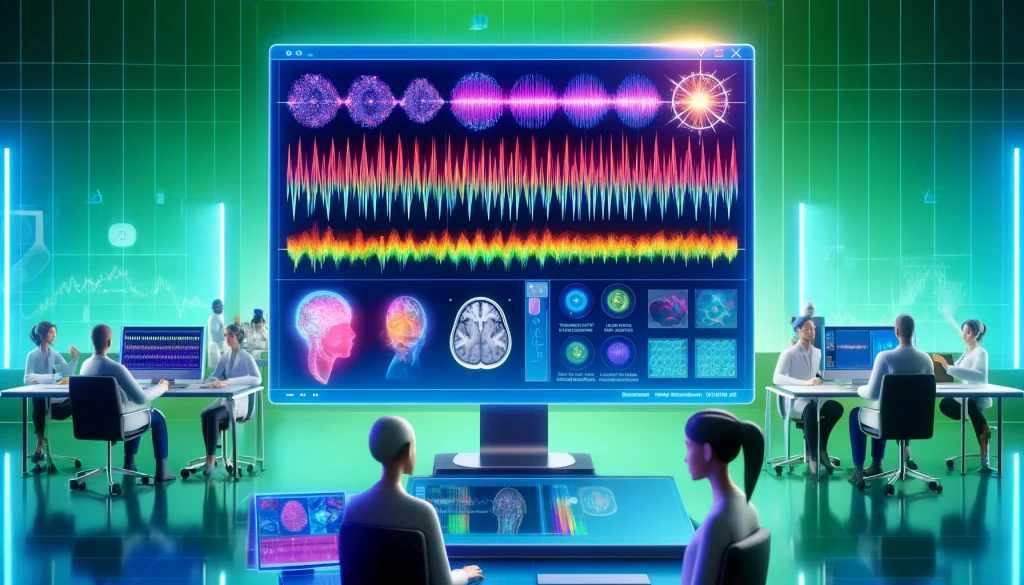
Introduction
In hospital rooms, doctors must pay close attention to the brain waves of very sick people. Making the right call about those brain waves is super important. New tech can be a big help with EEG Pattern Classification with AI. A smart computer system has been made to look at harmful brain wave patterns. It can spot six major types. This will make it easier for doctors to give the right care.
Why We Need AI for Brain Wave Patterns
In the ICU (intensive care unit), keeping an eye on brain waves is key for very sick people. This helps prevent brain damage. But when doctors look at brain waves by hand, they don’t always agree. Different doctors can see things differently. This can lead to delays and mistakes that hurt patient care. Smart computers can help by looking at brain waves the same way each time. However, some AI systems work in a way that’s hard to follow. This makes doctors unsure about trusting the computer’s call. Our new AI lets doctors see why it thinks a brain wave type is present.
Building an AI System Doctors Can Trust
A research team made a smart computer that can spot six brain wave patterns: seizures, lateralized periodic discharges (LPDs), generalized periodic discharges (GPDs), lateralized rhythmic delta activity (LRDA), generalized rhythmic delta activity (GRDA), and others. They trained the AI using a large set of 50,697 brain wave samples. These came from 2,711 patients over many years at Massachusetts General Hospital. Top brain doctors labeled each sample, so the training data was great quality. The AI can show its work for each call it makes. This lets doctors see why it picked a brain wave type.

Performance and Validation
A study with eight medical experts tested how well the AI model works. They were asked to look at 100 EEG scans. First without help from AI, then with AI help. The results were great! Without AI help, they got 47% right. But with AI help, they got 71% right. This shows AI made a big improvement. The model’s AUROC scores ranged from 0.80 to 0.96 for different EEG patterns. This means it is very reliable and accurate. The model also did better than a traditional black-box model in performance and being able to explain itself. Testing with data from a different hospital confirmed the model works well.
Implications for Clinical Practice
This AI model can be understood by humans, so doctors can work with it. It helps them make accurate diagnoses and give better patient care. Not only does it improve how well doctors perform, but it also shows how different EEG patterns relate. This supports the idea that seizures and brain injury are connected. The model gives clear explanations for each case, so doctors understand its reasoning. This lowers the risk of misdiagnosis. It can be very useful in ICUs where fast, accurate decisions matter a lot. Doctors and trainees can also use it to get better at recognizing EEG patterns. Using AI that can be understood is a big step toward bringing advanced technology into clinical work. Ultimately, it will lead to better results for patients.
